Title: From Knowledge Navigator to Digital Fools - Part 1
An unconventional history of the many ways to get lost in technology
Took most of August off planning a new business. Back now on biweekly Monday cadence. Part 1 today. Part 2 later this week.
For those that are interested I am starting a new Substack for periodic writing when I go on certain lifetime trips, called Journeys Until The End of My Time. The first one starts this Friday with musings from what I’m calling Going Home Again When You Know You Can’t. You can subscribe here -
or just catch me in Notes.
I last left you nearly 4 weeks ago with my contention that many people are living are deeply inside of our fabric of technology tools; some having entered this cloth quite voluntarily. In order to understand this we need to look at history. I realize that for many history is something not required or even of interest, especially since the Great Schism (coming in Article 3 of this series). But I have been an analyst all my working life and history is one of the key components of deep understanding: what happened, which things were most important in hindsight, and how they are affecting us in the present. History acts like slow motion footage so we can see our society’s transformation one step at a time. As a friend responded to the first article there are many different ways of getting lost.
We're captive on the carousel of time
We can't return we can only look
Behind from where we came
And go round and round and round
In the circle game
Joni Mitchell 1966
I positively jumped into 1990, reinventing myself vocationally. I launched my first consulting company with 4 colleagues. I started the first of three years as a sessional lecturer at Simon Fraser University, teaching Managing Information Technology at the graduate level.
For those who weren’t in their primes 35 years ago let me quickly set up what technology was like back then:
Note that telephone calls have actually declined. Of course, there are many technologies if we continued this comparison that would be:
1990 not yet invented and available, 2025 ubiquitous usage.
Those were days when most people were technophobes; some were techno-agnostic. Decisions about using technology were mostly made the basis of ROI and risk assessment. The few computers at home were either technology professionals or post secondary students.
However, the concept of the strategic use of Information Technology (IT) for business organizations had gained some footing in the mid-1980s. So in order to stimulate the imagination of my classes in the first session I lick things off by showing The Knowledge Navigator a video created by Apple in 1987. ( I realize that a HUGE percentage of people NEVER click on links but if you haven’t seen this it is amazing and it is sort of essential to the rest of this piece. It is worth the almost 6 minutes and as they say “an older video is worth a thousand TikToks”)
To get to the full page version of the video it is better to open the link in Youtube
Knowledge Navigator (Apple 1987) in HD
Every year I got the same reaction: How dare I show science fiction, with derision in the few voices of those working in IT. The class just wanted hard nosed facts and fundamentals, not wishful thinking.
But so many of the concepts this video showed came into being by the oughties, which to me was pretty quick (15 to 20 years). Did any members of my classes help position their organizations to understand what was about to happen? Doubtful.
I find looking at the recent Youtube comments for this video fascinating as people pick over minutiae of what it got wrong. Hindsight is 20/20 and arrogant. But most of them missed what I think is the most important thing the video got wrong (answer is point 6 in my unconventional history). Here are things where it didn’t go far enough:
Using detachable physical media for storage (instead of the cloud)
Printing onto paper
People talking directly to one another instead of typing endless messages to each another in one of the largest inefficiencies that technology has ever introduced
The video showed how the professor used the astonishing product as a “knowledge navigator” allowing him speed, productivity and quality. But it was clearly still a tool. He has his life to lead and leaves the device behind on his desk as he departs for lunch.
What we actually see years later are more profound dysfunctions from the accumulation of technology-driven change in the last 35 years. Because this digital transformation didn’t arrive all at once, we lived through each one more gradually, our behaviours being shaped more than we realize. It isn’t just a nice clean smooth curve of one technology coming in and augmenting the others. To some extent they fought with each other, partially changing impacts.
So today we have far less than we could have and far more than we might have wanted.
Right now some people are railing about and against AI, while others are swimming without lifeguards in the deep end. To me though it is all happening because we are already shoulder deep in digital quicksand. Let’s take an unconventional look at the technological history of how we got here.
Eight changes that buried us alive .
Data Processing becomes Multimedia
From the start computers and technology were mostly focused on business organizations, governments and academia. It was called data processing for decades because that is what it did: manipulated numbers for various purposes. Word processing was added starting in the late 1970s. By 1990 the foundation of image, audio and video were available; you just needed a range of special chips and peripherals to experience them in any meaningful way.
One of the exciting reasons we started our business in 1990 was because of the advent of multimedia. Our firm created animated training videos in the first 3 months of our existence. Graphic artists and videographers became a brand new class of user for personal computers. Apple in particular really captured that particular new and growing audience. Home computers weren’t just for accountants and report writers anymore.
Very quickly technology could provide a deep richness of media married with profound interaction with users. There were some fascinating CD-ROMs produced exploiting these capabilities. However, like my firm’s training videos these never really took off. The next two technology changes distracted focus, and people seemed to prefer novelty and communication over depth and richness. The only place where the full extent of this technology has taken off is in the gaming realm.
WHAT IT BROUGHT
Start of shift from business to individuals, but consumers were laggards
Attraction of more types of people, mostly limited to first movers and risk takers
Start of the use of a computer as a source of information, knowledge and entertainment
WHAT IT WROUGHT
Imagery and audio became the lingua franca of today’s technology
MY LASTING THOUGHT
That we never really exploited the richness of media and complex user interactions to get to deeper learning, knowledge buildings, and knowledge dissemination. That people actually prefer simple interactions - clicks and likes - to something more meaningful and insightful.
LOST SOULS
Gaming was one of the first bastions of the digital MIAs
By Myself to Being With Others
I remember a summer job I had in 1975 where I was doing detailed statistical analysis on inflation. I had to book one of two computers (that were really terminals to a mainframe) in a room that was like a cupboard. It was hot and uncomfortable. I spent weeks in there. You were very much on your own, entering streams of numbers then carrying around masses of paper output.
By the late 1980s, Local Area Networks were on the rise, allowing computers to be connected to share resources like files, programs and peripherals: printers and back-up devices. Work became more productive and organized, as this appealed primarily to businesses.
But LANs did one more thing: simple email could be sent to other people on your network. Together with the rise of voice mail in a similar timeframe, they changed the nature of our communications forever. Two brief memories from this time. All of us quickly and repeatedly getting to the voicemail maximum 50 messages as people left multiple voicemails rather than talking directly. Having to have different emails at all of our clients as none of the systems were linked.
WHAT IT BROUGHT
Communicating with people you knew without mail or directly in person / by the phone
Increase in the volume of communication, often short and repetitious
Increase in amount of communication not during office hours - anytime begins
Decrease in the personal / human aspect of communications
WHAT IT WROUGHT
Communication started to become a crucial use of technology
MY LASTING THOUGHT
That so many people would want to communicate indirectly, impersonally, and at their convenience for productivity reasons vs being effective and meaningful.
LOST SOULS
As the technology continues to morph so many are lost in a constant whirlwind of all types of messaging.
Hyper about the Growth of Plenty
In the late 1980s and early 1990s - hypertext, http and ftp, hypertext markup language, browsers, blah blah blah were developed - that resulted in websites. The early ones were fascinating and primitive, accessed via dial-up modems which were…….slow.
Very slow.
We would spend so much time waiting for these sites to actually come in, as the screen gradually painted what you were to see. In hindsight I cannot believe we had the patience to do this. But it was so exciting, as if we were discovering something completely new, almost forbidden (yes there were already porn sites).
Access speeds improved and we spent even more time looking at different websites. Rarely did they have anything to do with work, which was a profound change in thinking and use. I remember local business periodicals would interview “leading edge” people about their favourite websites.
The number and size of websites just kept increasing. Suddenly the web became practically infinite to any one individual (I am grateful that the expression information superhighway died in a road accident, and cyberspace exploded with one of Elon’s rockets). Yahoo had the prevalent website access model based on categorized sites by topic / knowledge. But the sites just kept growing and defying easy categorization. Thus the search engine was borne, which was the start of a slippery downward slope.
WHAT IT BROUGHT
Communicating with people you didn’t know
Looking at brand new things and considering new thoughts constantly
A new way of trying to communicate that competed with radio, TV and print
More non-work usage of computer technology
The encouragement of novelty, endless viewing and the so-called dopamine rush
WHAT IT WROUGHT
The first case of drowning people with an endless flow of disparate information that needed a rationing mechanism: the search engine
MY LASTING THOUGHT
How quickly we went from interesting and different websites published to inform, educate, persuade and entertain, to high quality in terms of media but near mindless facsimiles in terms of intent and content
LOST SOULS
So many to choose but those lost in the endless e-commerce sites first championed by Amazon
Pricing Manipulation and our Dancing Behaviours
Up until this point, technology - software, hardware, and peripherals - were quite expensive. Software was purchased and people did not buy the upgrades for some time. This was a limiting factor in broad uptake by individuals vs business organizations.
Microsoft started one of two driving forces in software that brought prices for technology down to be more affordable for individuals by 2000.In 1989 it bundled Excel, Word and PowerPoint - which were not market leaders - into Office putting pressure on their competitors. It worked only too well. (The other force was technological innovation as scaling resulted in cheaper production costs for hardware).
It was like a deluge commenced as companies devised more and more pricing tactics. Subscriptions, the prevalent billing method today, was introduced in the late 1990s. As pricing dropped, more people started buying software which set off an unprecedented boom in the number and availability of software products.
We went from one major and important type of rationing mechanism - economics - to another, attention - with the fragmentation of products. Every little new feature set got its own product. Minimum viable product was invented, to get something out quickly to grab ahold of fleeting attention. Software quality suffered considerably, especially as development migrated to continuous releases. “Who cares if it is right, we will fix it later”
Naturally this pricing frenzy led to free. Nothing says behavioural change like a person ranting in hyperbolic language about their data in Facebook or Instagram when they have paid no money for it. Ever.
WHAT IT BROUGHT
The development and usage of thousands of different software products: “the 149 crucial tools you must have” listicle
The need for information to help you discern the quality of the various products (which later was gamed)
Ongoing continuous decline in quality software that conformed to great principles in design, UI, architecture, etc.
A profound shift from business to consumer
A lack of concern with the business models of the technology providers
The dysfunctions of free: strongly preferred over even nominal prices, little loyalty, consuming more, loss of purchasing friction and the irrational thrill you are getting a great deal
WHAT IT WROUGHT
A sense of entitlement by consumers to get whatever they want for cheap or free without regard to the economic effect anywhere in supply chains
MY LASTING THOUGHT
The universal poorness of most software such that gross overuse of a product in order to really know it is seen as being tech savvy rather than using a badly designed system
LOST SOULS
Keen techies who keep trying all of the freemium products in a never-ending search for the holy grail
So we are now somewhere early in the 2000s but you can seen the roots of changes that have now bitten hard. They created the momentum to more and more changes to our previous set of human behaviours.
But before Part 2 gets us more depressed let’s end by looking at the type of articles I used to write. It also completely explains why I am really late with this edition, being glued to Youtube. Watching. For those who missed it The World Humanoid Robot Games took place in Beijing, the first global sporting event dedicated solely to humanoid robots. As you can imagine the action was …….slow, disjoined, with lots of repairs. Still we are seeing improvement as the winning 1500 meter robot ran in a very respectable time of 6:34 (compared to the human record of 3:26). The other robots ran at my brand of leisurely times on the wrong side of 12 minutes.
Thanks as always for reading. I greatly appreciate the support I have received here on Substack. Feedback, sharing, even a simple like keep me going. See you again in just a few short days.






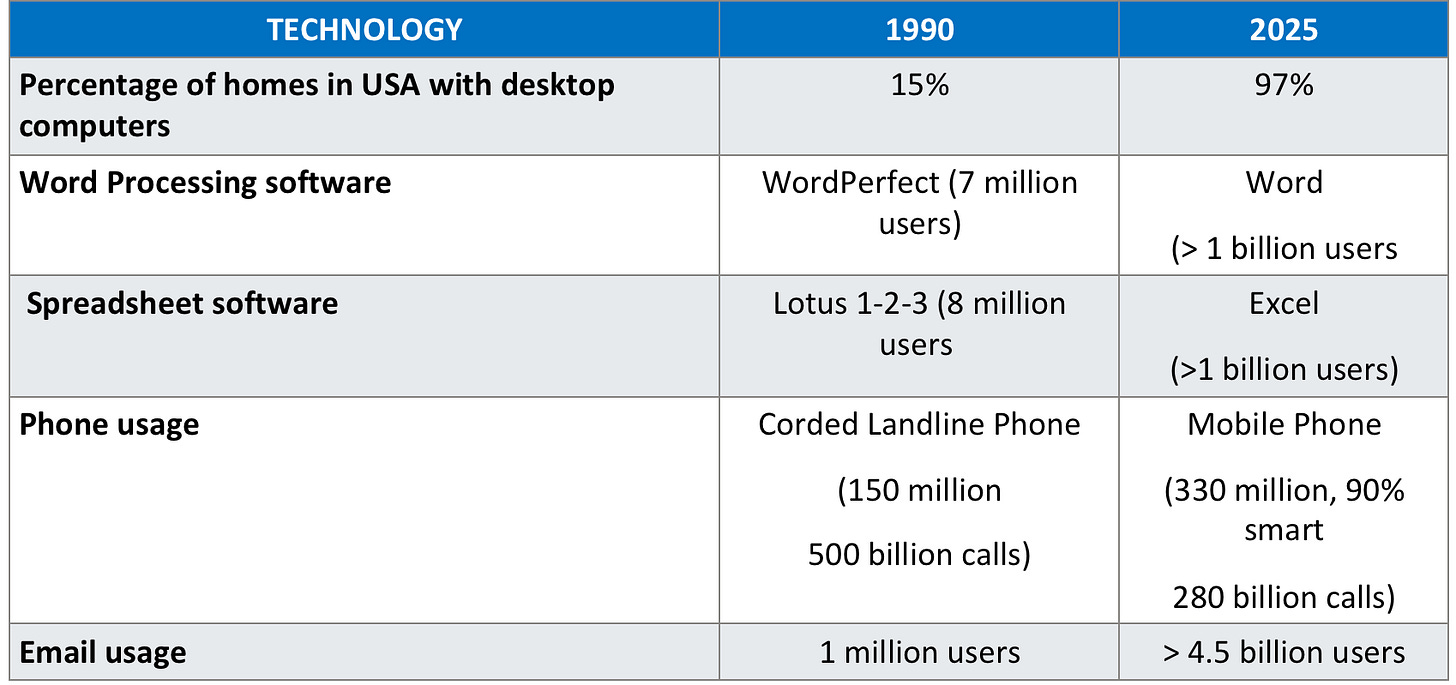
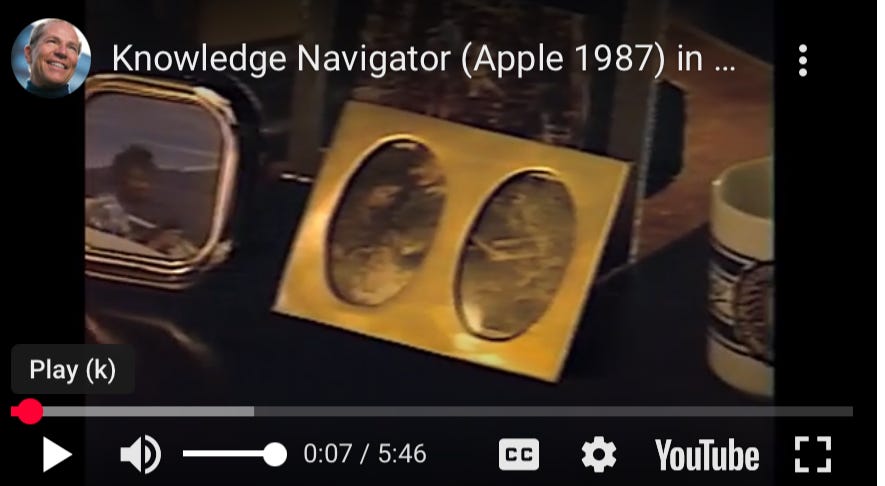

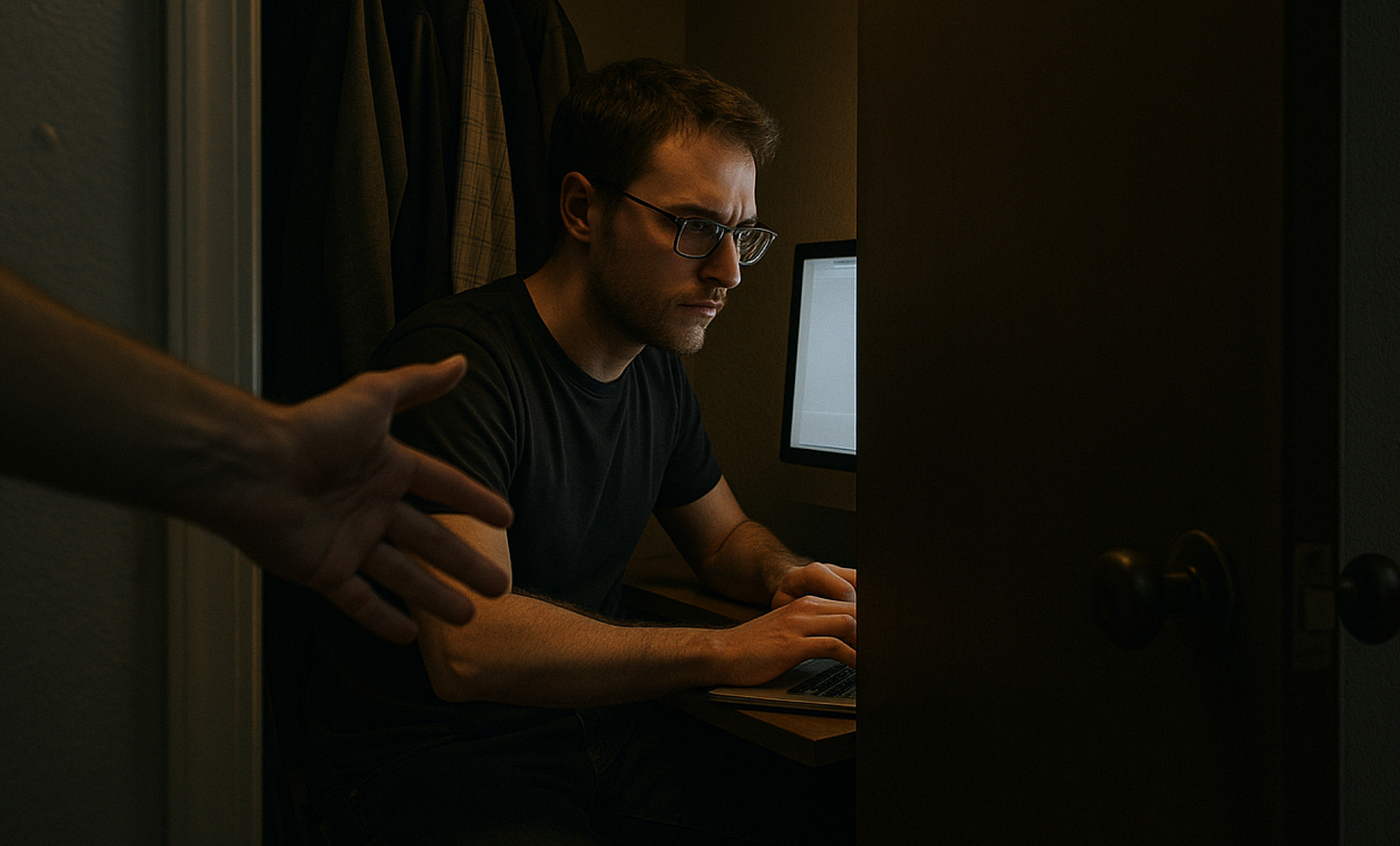
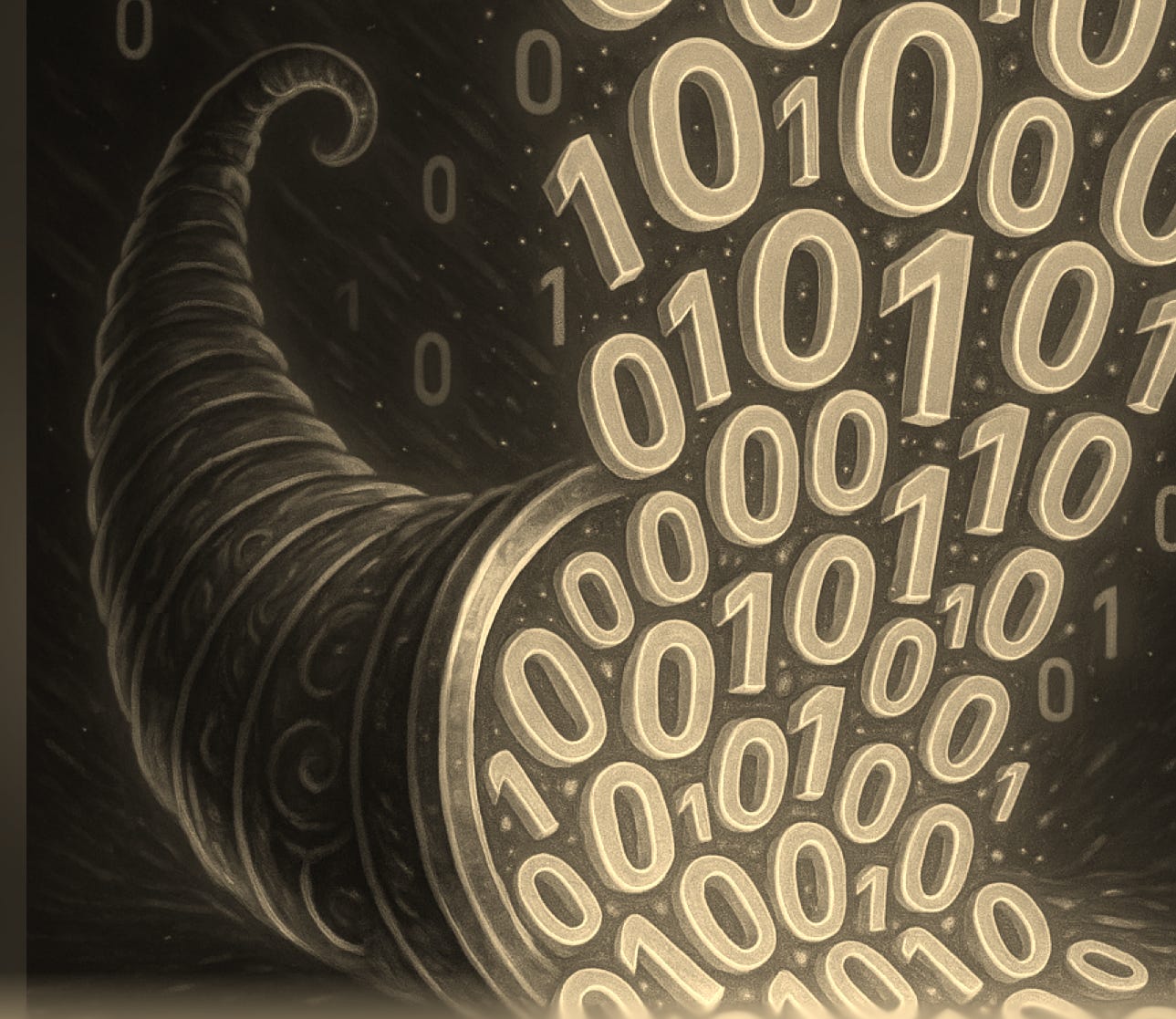
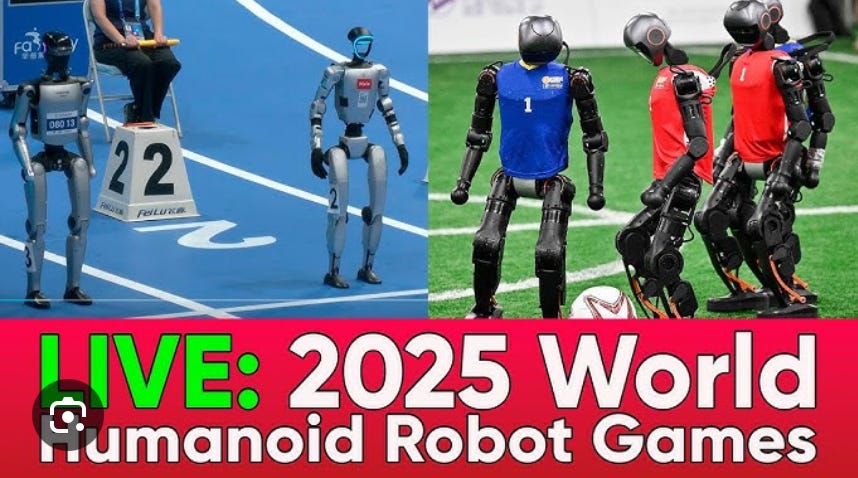


Oh wow, my friend!
Where do I even begin?
I was having a chat with a client the other day.
The bundling strategy you describe with Microsoft Office was brilliant in hindsight.
It normalized the idea that we should expect everything for 'free' or cheap, which paved the way for the attention economy we're drowning in now.
Building on the "rationing mechanism" concept, we've actually created a third layer.
I call it algorithmic rationing. Now it's not just about what we can afford or pay attention to, but what the platforms decide we should see. We've handed over our filtering mechanisms entirely.
I write about this a little bit today.
Those humanoid robots running 12 minute races while we debate AI feels very on-brand for where we are. Don't you think? Happy Tuesday David.
I really appreciated reading this historical view of how we got lost in technology, and I look forward to the next installment. There is so much of this tech that I only use in a marginal way, and I grieve the attention deficit. Years ago, I heard someone lament, "I wish I had my pre-internet brain again," and I understood that exactly! Still worth learning how we got here. Thanks for this journey and your depth of knowledge from inside.